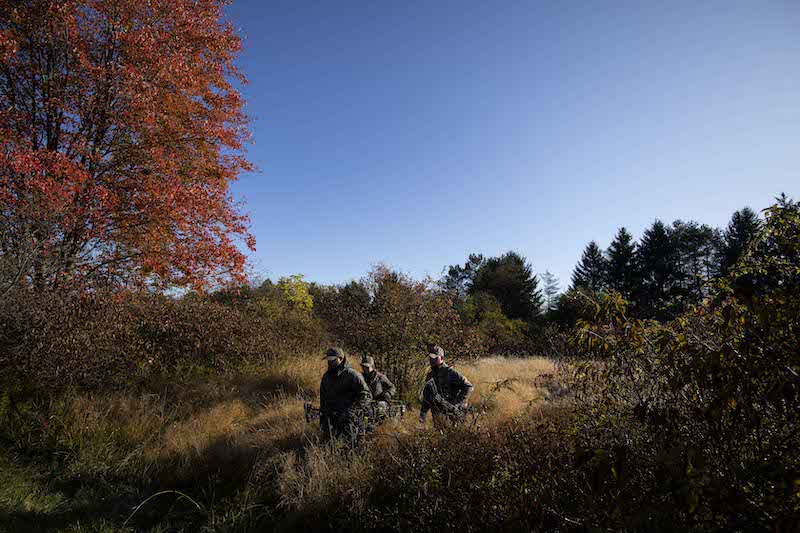You’ve monitored trail cameras all summer, and know you have quality bucks on your hunting property. You’ve scouted. You’ve shot your bow so much all summer that it feels like part of your body.
But all those preparations will be for naught if you can’t get into your stand without spooking your quarry. White-tailed deer are wary. It’s how they survive attacks from coyotes, wolves, bobcats and stray dogs. So sneaking into your stand without being seen, heard or smelled takes planning.
The first step is placing your stands so they’re downwind of a deer’s likely approach. Placing multiple stands to capitalize on different winds is a great plan, but you can also be mobile and use a climbing stand. Either way, remove tree limbs and brush at the bases so you can set up quietly and efficiently.
You must also use restraint when the wind isn’t right. Don’t hunt a stand if the wind doesn’t favor you, even if it’s where your target buck will likely pass on its way from its bedding area to a prime food plot. That deer will likely be alive tomorrow, but if you hunt when the wind favors the buck and it reveals your location, you’ll probably never see him from that stand.
Learning how deer move on your property will help you choose stands for different winds. If you can identify where deer bed and feed you can set your stands to intercept them. If you don’t know their movements — particularly where they’re coming from — placing stands in relation to wind directions becomes a guessing game. Scouting helps. Place trail cameras, and note which direction deer come from. You might know if they all end up in your food plot or a crop field, but you must figure out where they’re coming from.

Use a scent-eliminating spray every time you hunt. Photo Credit: ATA
Even with the wind at your advantage, you must follow a strict scent-control regimen. Wash your clothing in scent-eliminating detergents, and a seal them inside a container when you’re not hunting. Some hunters also use ozone devices to destroy human odors. Whatever your strategy, do all you can to reduce human odors.
Wind isn’t your only consideration when trying to beat a buck’s nose. When hunting hilly terrain, your scent carries uphill on thermals as the morning air warms, and then downhill in the evening as temperatures drop.
Although minimizing scent and noise are critical, don’t overlook visibility. Approach your stand where you won’t be seen. That often means taking the long way around, rather than crossing a field, or staying low on a hill so you won’t be silhouetted. Each deer has different tolerances of people, based on how often they encounter humans. Deer in wilderness areas might flee at the first sign of a human, or stare in bewilderment because they rarely see people. Meanwhile, they get used to seeing machinery in farm country, and you can possibly use that trait to your advantage.

Make as little noise as possible as you approach your stand. Photo Credit: ATA
You must also stay quiet while walking through the woods, especially as you near your hunting site. Avoid coughing, sneezing, and stepping on sticks. Wear footwear that lets you feel twigs underfoot. Some hunters rake trails to their stands to remove crunchy leaves. And be extra stealthy (and careful!) while climbing into your stand.
Sometimes the biggest bucks don’t move until dusk. To have any chance of arrowing one, you might need to set up tight to their bedding areas. If you do, be even more cautious. If you wait for windy days, when deer are less likely to smell or hear you, you’re more likely to fool a buck at close quarters. It’s a gamble and you could get burned, but setting up within 100 yards of a bedded buck is sometimes the only way to get a crack at him.
Bowhunting is a short-range sport, and to get close to deer you must beat all of their senses. Choose your stand sites wisely, hunt only when conditions favor you, be thorough with your scent-control program, and sneak into your stand as quietly as possible. Your final approach is no time for complacency.